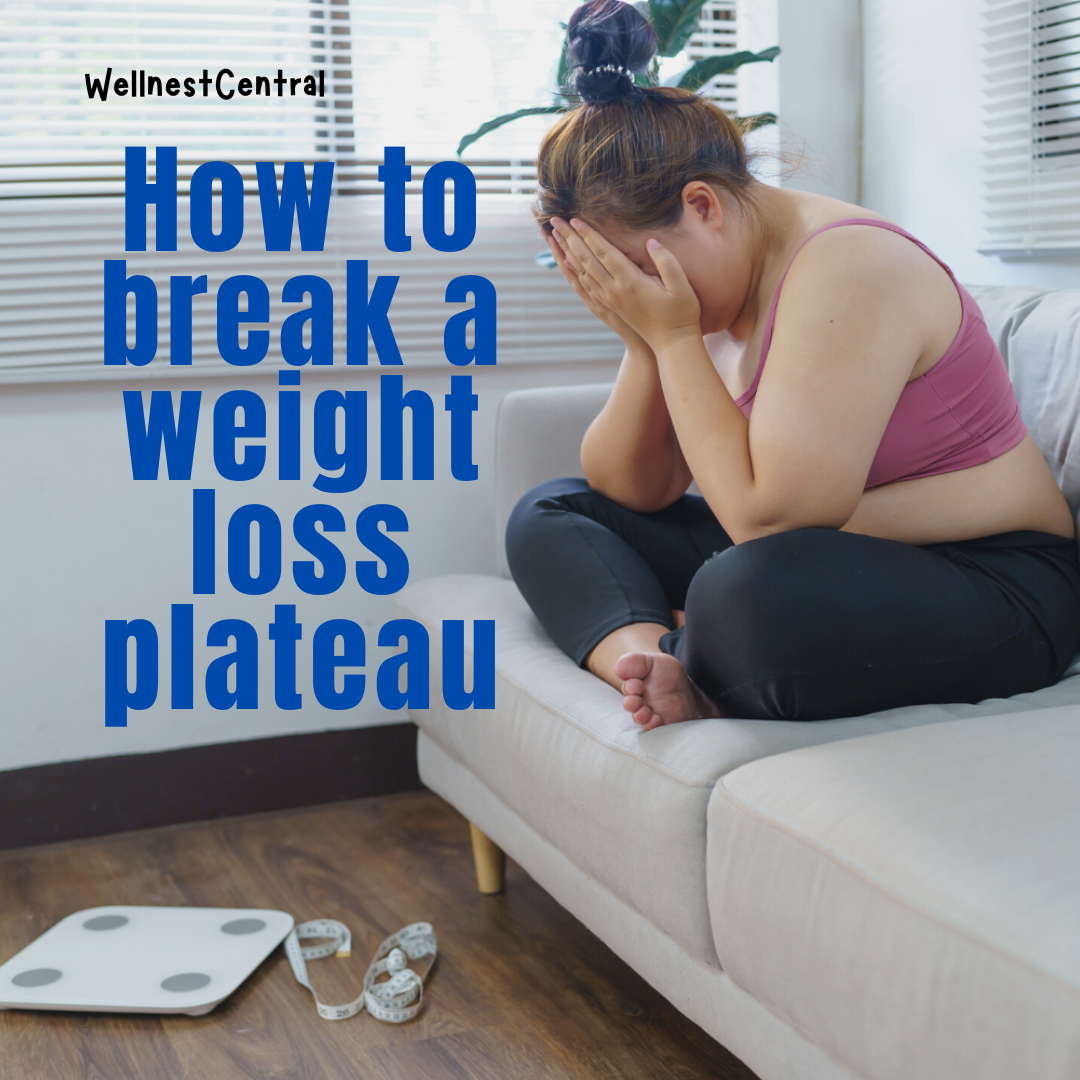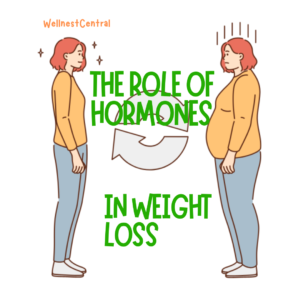Introduction
Attention: So, you’ve been diligently sticking to your diet and exercise plan, but suddenly, the scale refuses to budge. Frustrating, right?
Interest: Hitting a weight loss plateau is common and can feel like a major setback. But don’t worry—you’re not doing anything wrong. A plateau is simply your body’s way of adjusting to your new habits.
Desire: By understanding why plateaus occur and learning some practical strategies, you can break through and continue your weight loss journey effectively.
Action: Let’s explore what causes a plateau and how you can overcome it to kickstart your progress again.
Understanding Weight Loss Plateaus
Before diving into solutions, it’s crucial to understand what a plateau is. A weight loss plateau occurs when you stop losing weight despite maintaining your diet and exercise routine. Initially, your body burns calories quickly as you shed those first few pounds. However, as your body adapts to your new weight and lifestyle, it becomes more efficient, which means fewer calories burned.
Several factors contribute to this efficiency:
- Metabolic Adaptation: As you lose weight, your metabolism slows down.
- Water Weight Fluctuations: Rapid weight loss often includes water weight, and once stabilized, it may appear as if the progress has stalled.
- Muscle Loss: If you’re losing both fat and muscle, your body burns fewer calories since muscle mass burns more calories than fat.
Don’t be discouraged! Plateaus are normal, and they’re often a sign that your body needs something new to continue progressing.
1. Reevaluate Your Caloric Intake
What You Need to Know: As you lose weight, your caloric needs decrease. What may have worked when you were 20 pounds heavier may not be effective anymore.
Try This: Recalculate your daily caloric needs based on your current weight, activity level, and goals. Tools like online calorie calculators can be helpful. Pro Tip: Don’t drastically reduce your calories—it’s about finding the right balance.
Small Adjustments Can Make a Big Difference: Even a slight adjustment in your caloric intake can help kickstart progress. For instance, try reducing your intake by 100-200 calories and observe any changes over a few weeks.
2. Mix Up Your Exercise Routine
What Happens During a Plateau: Your body is incredibly adaptable. If you’ve been doing the same workouts for weeks or months, your body gets used to them, making them less effective over time.
Try This: Change your workout style:
- Increase Intensity: Incorporate High-Intensity Interval Training (HIIT) or add resistance bands to your strength workouts.
- Add New Activities: If you’re used to jogging, try swimming, cycling, or a fitness class like kickboxing or Zumba.
- Mix Cardio and Strength Training: Don’t focus on one type of exercise; balance cardio workouts with strength training to build muscle and boost metabolism.
Quick Tip: Aim to change up your workout routine every 4-6 weeks to keep your body challenged.
3. Monitor Portion Sizes (Even the Healthy Stuff)
Why It’s Important: Over time, it’s easy to become a little too relaxed with portion sizes, especially if you’re consuming nutrient-dense foods like nuts, avocados, or whole grains.
Try This: For a week, track your portions and be mindful of serving sizes. Use measuring cups, a food scale, or your hand to gauge how much you’re actually eating.
Avoid “Calorie Creep”: Remember that even healthy foods can contribute to excess calories if portion sizes are too large. For instance, a handful of nuts is a healthy snack, but multiple handfuls throughout the day can add up quickly.
4. Keep Stress Levels in Check
What Stress Does to Your Weight Loss: Chronic stress elevates cortisol levels, which can lead to increased hunger and cravings for high-calorie comfort foods. It also makes it harder for your body to burn fat.
Try This: Incorporate stress management techniques like:
- Mindfulness Meditation: Spend 5-10 minutes a day practicing deep breathing.
- Yoga or Gentle Stretching: A great way to relax both your body and mind.
- Journaling: Writing down your thoughts, emotions, and achievements can help process stress and keep you motivated.
5. Increase Protein Intake
Why Protein Matters: Protein is essential for building and maintaining muscle mass, which is important for burning calories even at rest. It also has a higher thermic effect, meaning your body burns more calories digesting protein compared to fats or carbs.
Try This: Include a source of protein in every meal. Think lean meats, fish, eggs, dairy, legumes, and plant-based protein sources like tofu and quinoa.
Example Meal Ideas:
- Breakfast: Greek yogurt with berries and nuts
- Lunch: Chicken salad with mixed greens and a light vinaigrette
- Dinner: Grilled salmon with roasted vegetables
6. Make Sure You’re Hydrated
Why Hydration Is Key: Often, we mistake thirst for hunger. Staying hydrated helps control appetite and supports metabolic processes.
Try This: Aim for at least 8 cups of water a day or more if you’re active. Start your morning with a glass of water, carry a water bottle with you, and set reminders to drink throughout the day.
Flavor Your Water: If plain water doesn’t excite you, try adding a squeeze of lemon, lime, or a few fresh mint leaves.
7. Get Enough Sleep
What Lack of Sleep Does to Weight Loss: Poor sleep quality or not getting enough sleep can lead to hormonal imbalances, increased cravings, and a lack of energy for workouts.
Try This: Aim for 7-9 hours of quality sleep per night. Establish a consistent bedtime routine:
- Wind Down 30 Minutes Before Bed: Turn off electronics, read a book, or listen to soothing music.
- Create a Relaxing Sleep Environment: Keep your bedroom cool, dark, and free from distractions.
Sleep as a Priority: Remember, sleep is just as important as diet and exercise when it comes to breaking through a weight loss plateau.
8. Practice Mindful Eating
Why It Helps: Mindful eating can help you reconnect with your body’s natural hunger cues, allowing you to better control portion sizes and reduce emotional eating.
Try This: Eat without distractions like TV, phone, or computer. Chew your food slowly, and take the time to appreciate each bite. Check in with yourself halfway through your meal—are you still hungry or satisfied?
The Hunger-Fullness Scale: Use a scale of 1-10 to assess how hungry or full you are before, during, and after meals. Aim to eat when you’re around a 3-4 (moderately hungry) and stop around a 6-7 (satisfied but not stuffed).
9. Review Your Macros and Adjust as Needed
Why It Matters: A balanced intake of macronutrients (carbohydrates, proteins, and fats) is crucial for energy and weight management. If you’re stuck in a plateau, a tweak to your macros may help.
Try This: Experiment with adjusting your carb, fat, and protein ratios. For some, increasing protein and reducing carbs may help, while others might benefit from balancing their fats and carbs more evenly.
Remember: Everyone is different, so don’t be afraid to try different combinations to see what works best for your body.
10. Be Patient and Stay Consistent
Plateaus Are Normal: It’s important to recognize that weight loss isn’t always linear. There will be times of rapid progress, times of slow progress, and yes, times of plateaus.
Try This: Keep focusing on your healthy habits, and don’t get discouraged by a few weeks of little to no progress. Consistency is what ultimately leads to long-term success.
Celebrate the Wins: Whether it’s fitting into an old pair of jeans, having more energy, or developing better sleep habits, remember that all these victories count!
Conclusion
Breaking through a weight loss plateau is possible, and it doesn’t mean that your journey has come to a halt. By reassessing your habits, making slight tweaks to your diet and exercise routine, and practicing patience, you can get back on track. Remember, a plateau is simply your body’s way of saying it’s time for something new—embrace the change, and you’ll see results again.
Call to Action
Have you experienced a weight loss plateau before? Which tip will you try first to break through? Share your journey and progress in the comments, and subscribe for more sustainable health tips!
FAQs
- How long does a weight loss plateau usually last? It varies for everyone. Plateaus can last a few weeks to a couple of months. The key is to reassess and adjust your habits to break through.
- Do I need to cut calories drastically to overcome a plateau? Not necessarily. Sometimes minor adjustments in calories, exercise routine, or macronutrient balance are enough to kickstart progress.
- Why am I not losing weight even though I’m eating healthily and exercising? Your body may have adapted to your routine. Try changing your exercise intensity, reassessing your caloric needs, and checking your portion sizes.
- Can stress really affect my weight loss progress? Yes, stress can elevate cortisol levels, leading to increased hunger, cravings, and fat storage. Incorporating stress-reducing activities can support weight loss.
- Is it normal to experience multiple plateaus during my weight loss journey? Yes! Multiple plateaus are common as your body adjusts to different weight stages. The key is to keep adapting your habits to continue making progress.




